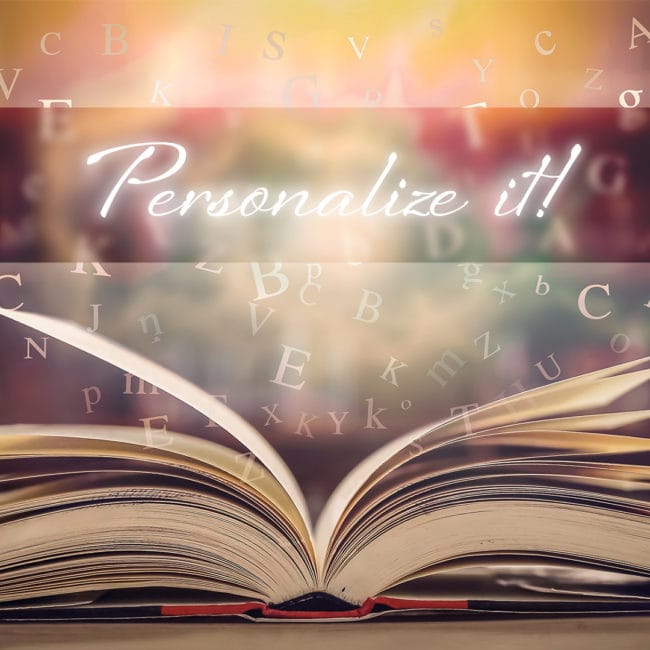Tips for book cover design success.
- Title. The title will want to be the most prominent element on the page and set in a font that is fairly simple and easy to read. Keep in mind that if you are selling your book online the front cover will be thumbnail size when presented to online shoppers in browsers and reading devices. Therefore the legibility of the title needs to be crystal clear in both the larger printed version and the digital thumbnail size.
- Subtitle (if applicable). This element is #2 in priority after the title. It also wants to be very legible and easy to read at small sizes. Often the subtitle is set in a smaller less "fancy" font than the title, but is still complimentary to the title. The design of the title and subtitle work together to create a typographic grouping that works with and enhances the rest of the design.
- Series Number (if applicable). If your book is part of a series you can choose to include this information on the front cover. Usually it is quite small and worked into the typographic design of the title and subtitle or, in some cases, across the top of the page. Some authors choose to only put this on the spine or back cover, but if your book's fans will mostly be reading it as an ebook it can be helpful for them to see the series number on the front cover.
- Endorsement. If you have an endorsement from a person with a well-known name, great for you! Endorsements can help add credibility to your book and it may work well to give a big name endorsement some prominence on the front cover, but limit it to one and keep it short. Start collecting endorsements and reviews early!
- Author Name. Of course readers will want to know who the author is! This element is most commonly placed in the lower third of the front cover. Unless you are a super well-known and established author, the prevailing advice is to keep the author name small.
- Design. Buyers do judge books by their covers! All of the previously mentioned elements need to work seamlessly with the overall design of the book. Hire a professional book cover designer to avoid a front cover design that is easily recognized as amateurish. The design of your book cover can be made up of images, or illustrations, it can be strictly typographic, or it can be a combination of all these things. Whichever direction you choose should reveal the tone of your book right away so that upon first glance the reader can instantly get a sense for the content inside. The design should also be reflective of other books in your genre - similar, but distinct, so that it "fits" with the other books on the shelf and also stands out. Finally - don't forget to look at a gray scale version of your cover - some e-readers don't display color, so the cover must still look good and be readable in gray scale.
Pro Tip: Don't try to do too many things on the cover design. Any image or illustration should only hint at the story inside the book. To create impact, try to limit the cover design to one striking image or symbol.
After the audience is defined and the research and planning is done then is it ready for the design phase. When I design the front cover of your book some of my goals include:
- Readability of the title font
- Seeking creative continuity from the front cover, over the spine and onto the back cover (and inside/outside flaps if it's a dust jacket).
- Making sure the cover scales down to smaller sizes well.
- Creating a cover that is unique but fits in the genre.
- And finally...ensuring that you - the publisher! - absolutely love your book's cover design.
Want more tips like this? Subscribe to my monthly book design newsletter.
Help for Independent Presses
Book Design & Production
Have you written a nonfiction or fiction manuscript? After it has been professionally edited, I can design the interior pages and cover, plus guide you through the maze of book publishing and printing. To get started, contact me to discuss your project and my helpful guide for authors.

















 Without some direction, your designer has to make assumptions about what they think you will like. Sometimes it works out and you get a cover that is acceptable, but more often than not, without a proper set of expectations and guidelines, it misses the mark and they have to go back to the drawing board and begin again. This can be frustrating to both the author and designer as it inevitably adds more time and cost to the project.
Without some direction, your designer has to make assumptions about what they think you will like. Sometimes it works out and you get a cover that is acceptable, but more often than not, without a proper set of expectations and guidelines, it misses the mark and they have to go back to the drawing board and begin again. This can be frustrating to both the author and designer as it inevitably adds more time and cost to the project.